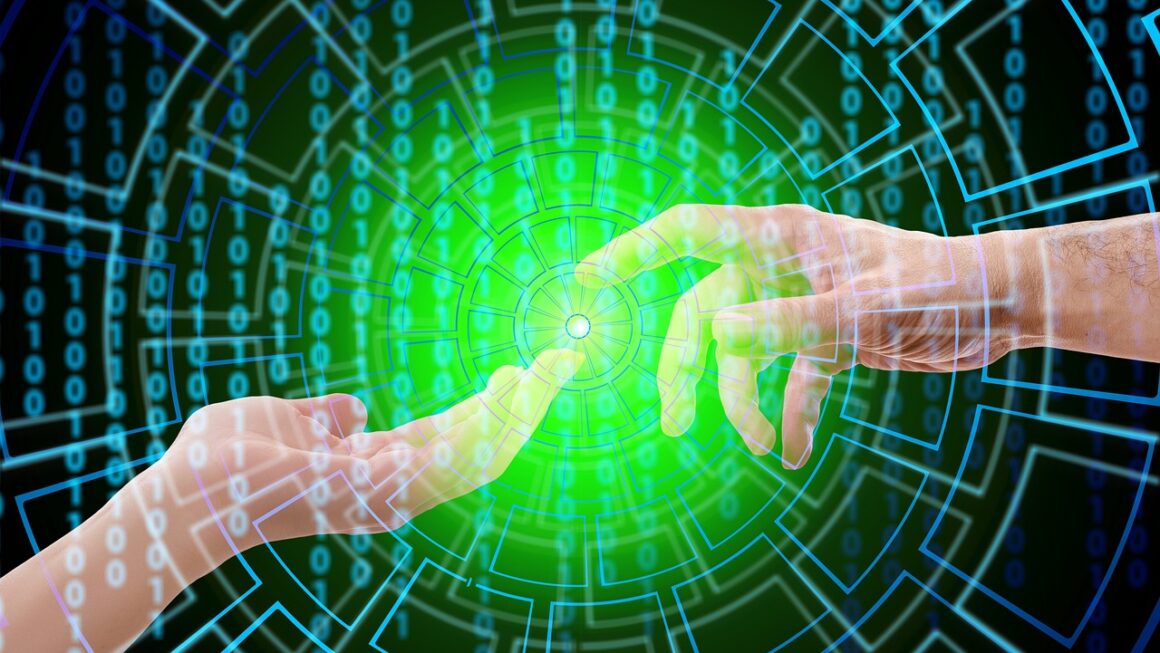OpenAI has rapidly evolved from a research lab to a driving force in artificial intelligence, reshaping industries and captivating imaginations with its groundbreaking advancements. From its early days of open-source ideals to the sophisticated AI models it offers today, OpenAI’s journey is a testament to the transformative power of AI. This blog post explores OpenAI’s origins, its key technologies, practical applications, and future trajectory, providing a comprehensive overview of this influential organization.
What is OpenAI?
The Mission and Vision
OpenAI’s mission is to ensure that artificial general intelligence (AGI) benefits all of humanity. Originally founded as a non-profit research company in December 2015, its core vision remains centered around developing safe and beneficial AI. They aim to carefully navigate the risks associated with advanced AI technologies while maximizing their positive impact on society.
From Non-Profit to Capped-Profit
Initially established as a non-profit, OpenAI transitioned to a “capped-profit” model. This structure allows them to attract investment and top talent necessary for competing in the rapidly evolving AI landscape, while still prioritizing their core mission. This shift has enabled them to build and deploy more powerful AI models.
Core Values and Principles
OpenAI’s core values center on safety, collaboration, and widespread benefit. They emphasize:
- Safety: Ensuring AI systems are developed and deployed responsibly, minimizing potential harm.
- Research Focus: Continuously pushing the boundaries of AI research.
- Collaboration: Working with researchers, organizations, and policymakers to navigate the societal implications of AI.
- Beneficial AI: Striving to make AI accessible and beneficial for all, not just a select few.
Key OpenAI Technologies and Products
GPT (Generative Pre-trained Transformer) Series
GPT models are a cornerstone of OpenAI’s success. These large language models (LLMs) are trained on massive amounts of text data and can generate human-quality text, translate languages, write different kinds of creative content, and answer your questions in an informative way.
- GPT-3: A significant leap in language model capabilities, GPT-3 demonstrates impressive text generation, translation, and question-answering abilities. It powers many third-party applications.
- GPT-3.5: Improvements upon GPT-3, offering enhanced performance, coherence, and safety. This model serves as the foundation for several OpenAI products.
- GPT-4: The latest generation, GPT-4 is a multimodal model, accepting image and text inputs, and emitting text outputs. It achieves human-level performance on various professional and academic benchmarks. GPT-4 is known for its enhanced creativity, problem-solving abilities, and safety.
DALL-E
DALL-E is an AI model that creates realistic images and art from textual descriptions.
- DALL-E 2: An advanced version offering higher resolution, greater realism, and more diverse image generation capabilities compared to its predecessor.
- Image Editing: DALL-E can not only generate new images but also edit existing ones based on textual prompts.
- Example: Prompt: “A corgi riding a motorcycle through a neon-lit cyberpunk city.” DALL-E will generate an image reflecting that description.
Codex
Codex is an AI model that translates natural language into code. It is based on the GPT-3 architecture and has been fine-tuned on publicly available code repositories.
- Code Generation: Codex can generate code snippets, complete functions, and even entire programs based on natural language descriptions.
- Programming Assistance: It can assist developers in writing code, debugging, and understanding complex codebases.
- Applications: Used in GitHub Copilot, a popular AI-powered coding assistant.
- Example: A developer might write “Create a Python function to calculate the factorial of a number.” Codex would then generate the corresponding Python code.
ChatGPT
ChatGPT is a conversational AI chatbot based on the GPT-3.5 and GPT-4 models, fine-tuned for dialogue. It can engage in natural-sounding conversations, answer questions, provide information, and even generate creative content.
- Interactive Conversations: ChatGPT can understand and respond to a wide range of prompts and questions, providing personalized and informative responses.
- Multilingual Support: Supports multiple languages, making it accessible to users worldwide.
- Applications: Used for customer service, content creation, education, and more.
OpenAI API
OpenAI provides an API (Application Programming Interface) that allows developers to integrate their AI models into their own applications and services.
- Access to AI Models: The API provides access to a range of OpenAI’s models, including GPT, DALL-E, and Codex.
- Customization: Developers can fine-tune the models for specific tasks and domains.
- Scalability: The API is designed to handle large volumes of requests, making it suitable for enterprise-level applications.
Practical Applications of OpenAI’s Technology
Content Creation and Marketing
OpenAI’s language models are transforming content creation and marketing.
- Generating Marketing Copy: Generating ad copy, website content, and social media posts.
- Writing Blog Posts and Articles: Creating high-quality content on various topics.
- Personalizing Customer Interactions: Crafting personalized emails and messages based on customer data.
- Example: A marketing team could use GPT-3 to generate multiple variations of ad copy for A/B testing.
Customer Service and Support
ChatGPT is being used to automate customer service interactions.
- Chatbots: Providing instant answers to customer inquiries and resolving common issues.
- Virtual Assistants: Assisting customers with complex tasks, such as booking appointments or troubleshooting technical problems.
- Personalized Support: Tailoring support interactions based on customer needs and preferences.
- Example: An e-commerce company could use ChatGPT to provide 24/7 customer support, handling routine inquiries and escalating complex issues to human agents.
Education and Learning
OpenAI’s technology is being used to enhance education and learning.
- Personalized Tutoring: Providing customized instruction and feedback to students.
- Content Generation: Creating educational materials, such as quizzes, study guides, and lesson plans.
- Language Learning: Assisting language learners with pronunciation, grammar, and vocabulary.
- Example: An educational platform could use GPT-4 to generate personalized study guides for students based on their learning styles and progress.
Software Development
Codex is revolutionizing software development.
- Code Generation: Automatically generating code snippets and complete functions.
- Code Completion: Suggesting code completions as developers type.
- Code Understanding: Helping developers understand complex codebases.
- Example: A developer could use Codex to automatically generate unit tests for their code, saving time and improving code quality.
The Future of OpenAI and AI
Advancements in AGI
OpenAI’s long-term goal is to achieve artificial general intelligence (AGI), which refers to AI systems that can perform any intellectual task that a human being can.
- Continued Research: Investing heavily in research to improve AI capabilities and safety.
- Ethical Considerations: Addressing the ethical implications of AGI.
- Societal Impact: Working to ensure that AGI benefits all of humanity.
Challenges and Opportunities
- Ethical Concerns: Addressing biases in AI models and preventing misuse.
- Safety and Security: Ensuring the safety and security of AI systems.
- Economic Impact: Managing the economic impact of AI automation.
The Broader AI Landscape
OpenAI is just one player in the rapidly evolving AI landscape. Other companies, research institutions, and governments are also investing heavily in AI research and development. Collaboration and open-source initiatives are crucial for ensuring that AI benefits everyone. According to a recent report by Stanford University, private investment in AI reached $93.5 billion in 2021.
Conclusion
OpenAI has established itself as a leader in artificial intelligence, pushing the boundaries of what’s possible with AI technology. From its groundbreaking GPT models to its innovative applications in content creation, customer service, and software development, OpenAI’s impact is already being felt across industries. While challenges remain, the future of OpenAI and AI holds immense potential for transforming society and improving lives. By continuing to prioritize safety, collaboration, and widespread benefit, OpenAI can help ensure that AI serves as a force for good in the world.




